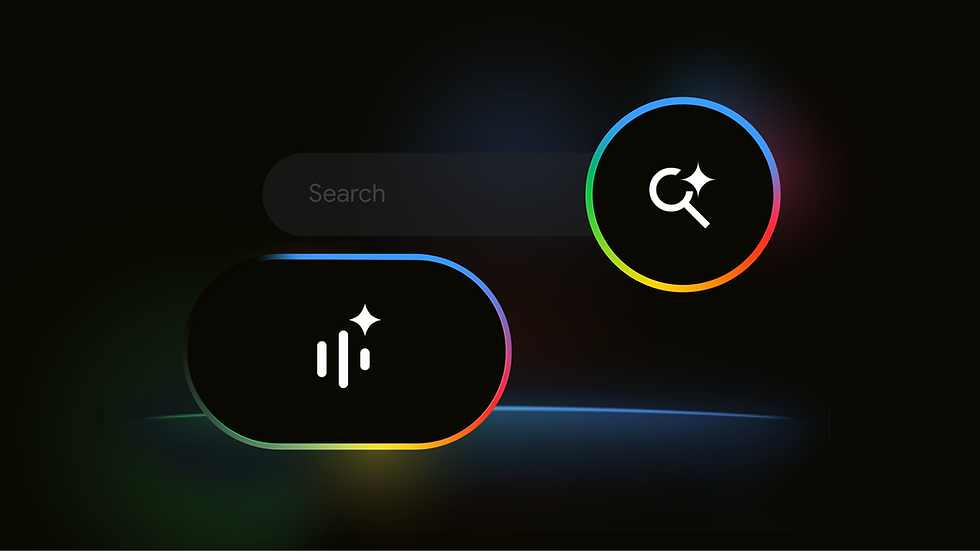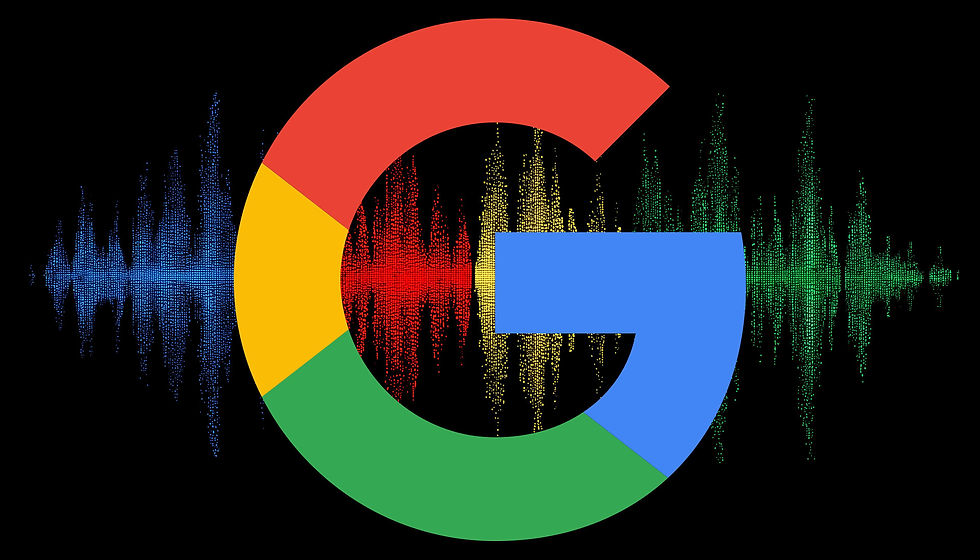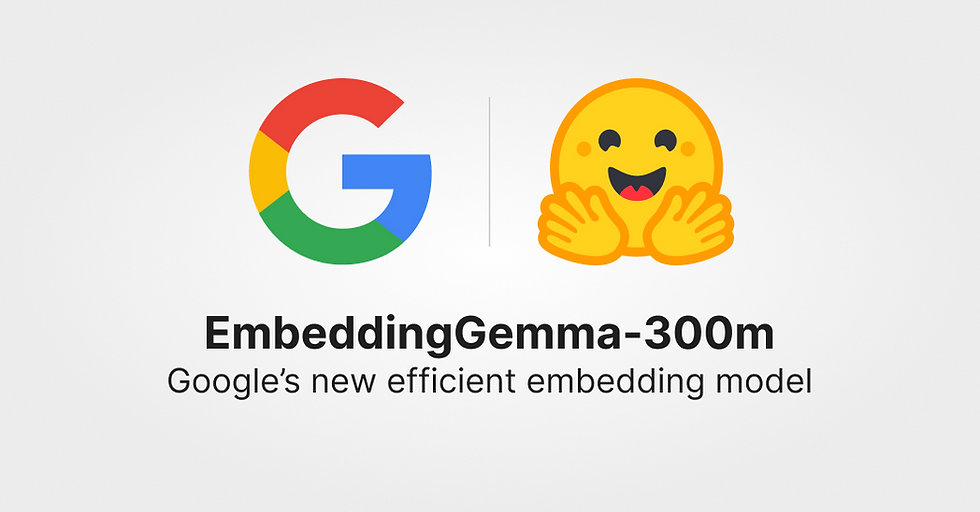Google Search Live Expands, Redefining AI Search
- Aisha Washington

- Oct 9
- 7 min read

The era of typing keywords into a sterile search box is rapidly giving way to a more dynamic, intuitive, and conversational way of finding information. We are moving from asking "what" to exploring "why" and "how" in a seamless dialogue with technology. At the forefront of this transformation is Google, which is once again reshaping the digital landscape with its latest innovation: Google Search Live. This AI-powered feature, which turns your smartphone camera into an interactive portal for real-time information, is not just an upgrade—it's a fundamental reimagining of what a search engine can be. As it begins its global rollout, starting with a significant launch in India, Search Live signals a new chapter in human-computer interaction, one where our digital and physical worlds merge more closely than ever before.
The Evolution of Search: From Keywords to Conversations

For decades, the core search experience remained unchanged: a user types a query, and a search engine returns a list of links. While algorithms grew infinitely more sophisticated, the basic paradigm held firm. However, the rise of powerful large language models and multimodal AI has shattered this status quo. The journey toward this new reality has been years in the making, built on foundational research projects within Google.
The technological underpinnings for features like Search Live can be traced back to initiatives like Project Astra, Google's vision for a universal AI agent that can see, hear, and understand the world in real-time. This, combined with the development of the highly capable Gemini family of models, has provided the horsepower needed to process and respond to complex, multimodal inputs. These custom models are designed not just to understand words but also the rich context of images, videos, and sounds, allowing them to grasp subtleties that were previously out of reach for AI. This evolution from a text-based index to a context-aware "answer engine" sets the stage for Search Live, a feature that feels less like a tool and more like a knowledgeable companion.
What Is Google Search Live and How Does It Work?
At its core, Google Search Live is an AI-powered conversational search feature that provides real-time assistance by leveraging your phone's camera. Instead of describing an object or a problem, you can simply point your camera at it. The feature supports fluid, back-and-forth conversations that draw on the continuous visual context from the camera feed, allowing for a natural and intuitive discovery process.
Imagine you're trying to fix a leaky faucet. With Search Live, you could point your camera at the fixture and ask, "What tool do I need to tighten this nut?" The AI could identify the specific type of nut and recommend a wrench. You could then follow up with, "Show me how to use it," and receive step-by-step visual guidance.
How to Access Search Live:
Getting started is straightforward. Once the feature is rolled out to your device, you can access it in two primary ways:
Open the main Google app and tap the "Live" icon located under the search bar
Open Google Lens and select the "Live" mode from the options at the bottom of the screen
It's important to note the potential for confusion with a similarly named feature, "Gemini Live," which is part of the standalone Gemini app. While both offer conversational experiences, Search Live is integrated directly into the Google Search and Lens ecosystem, focusing on augmenting the real world with information. In contrast, Gemini Live is a more generalized conversational AI within the dedicated Gemini application. This distinction highlights Google's strategy of embedding advanced AI capabilities across its existing product suite.
The Global Rollout: Why India is the New Frontier for AI Search

Google's strategic decision to launch Search Live in India, making it only the second market after the U.S. to receive the feature, is a calculated and telling move. The launch includes support for both English and Hindi, underscoring the company's commitment to localization from day one. This choice is not arbitrary; it's a direct reflection of India's position as a critical, fast-growing market and a hub for early AI adopters.
According to Hema Budaraja, Google's vice president of product management for Search, users in India are "power users of multimodal search," constituting the company's largest user base for both voice and visual search globally. This existing user behavior makes the country the perfect environment for training and refining a visually-driven AI like Search Live. By leveraging this enthusiastic adoption, Google plans to expose its systems to a diverse range of visual contexts, which will ultimately make the feature more capable and robust for users worldwide.
Beyond Search Live, Google is also aggressively expanding its broader AI Mode—the AI-powered interface for asking complex, multi-part questions. This includes the addition of seven new Indian languages: Bengali, Kannada, Malayalam, Marathi, Tamil, Telugu, and Urdu. This expansion is part of a massive global push to make AI Mode available in over 35 new languages and 40 new territories, bringing the total reach to more than 200 countries and territories. This demonstrates a clear strategy: to make advanced AI search a globally accessible and locally relevant tool.
How to Get Started with Google's New AI Search Features
Embracing this new wave of AI-powered search can unlock powerful new ways to learn, solve problems, and explore the world around you. Here are some actionable steps and practical use cases to get you started with Search Live and AI Mode.
Using Search Live for Real-World Problems:
DIY & Repairs: Point your camera at a broken appliance or a piece of furniture you're assembling. Ask questions like, "What is this missing screw called?" or "How do I re-assemble this part?"
Gardening & Nature: Identify a plant in your garden or on a hike by pointing your camera at it and asking, "What plant is this and how do I care for it?"
Cooking & Groceries:Show the AI the ingredients you have in your fridge and ask, "What can I make for dinner with these?"
Travel & Exploration: Aim your camera at a historical monument and ask, "Tell me the history of this building." You can also use it to translate menus and signs in real-time with added conversational context.
Shopping Assistant: When you're in a store, point your camera at a product and ask, "Can you find reviews for this?" or "Where can I buy this online for a better price?"
Leveraging AI Mode for Complex Questions:
AI Mode, accessible within the Google app, excels at handling nuanced, multi-part queries that traditional search struggles with. Instead of breaking your question into multiple searches, you can ask it all at once.
Trip Planning: "I'm looking for a 3-day family-friendly itinerary for San Francisco in October that includes a museum, an outdoor activity, and restaurants that serve vegetarian food."
Comparative Research: "Compare the pros and cons of the latest laptops from Dell and Apple for a college student majoring in graphic design, focusing on battery life, performance, and price."
Learning a New Skill: "Create a week-by-week learning plan for a beginner who wants to learn Python for data analysis, including recommended resources and beginner projects."
The Ripple Effect: Search Live's Impact on Users, Publishers, and the Web

The rollout of Google Search Live and other AI-driven features represents a tectonic shift with far-reaching implications. For users, the benefits are clear: a more intuitive, powerful, and personalized way to access information. The ability to ask questions about the physical world without needing the right keywords is a significant leap forward in usability and utility.
However, this evolution is not without controversy, particularly for the ecosystem of online publishers and content creators who rely on search traffic for their livelihood. A major point of contention has been the rise of AI Overviews and other answer-generating features, which critics argue are reducing clicks and traffic to external websites by providing direct answers on the search results page. This transforms Google from a "referral engine" into an "answer engine," potentially disintermediating the very creators whose content fuels its AI models.
While Google has consistently denied that its AI tools are hurting website visits, the concern within the publishing industry remains palpable. The long-term health of the open web depends on a symbiotic relationship where creators are rewarded for their work. As AI becomes more adept at synthesizing information, maintaining this balance will be one of the most critical challenges for Google and the digital economy at large. The principles of Expertise, Experience, Authoritativeness, and Trustworthiness (EEAT) become even more crucial, as users and regulators alike will demand transparency and reliability from AI-generated answers.
Conclusion and FAQ
Google Search Live is more than just a new feature; it's a glimpse into the future of information discovery. By merging our physical surroundings with the vast knowledge of the web through a conversational, camera-first interface, Google is fundamentally changing its most iconic product. The strategic launch in India highlights the global nature of this ambition and the importance of diverse user bases in building the next generation of AI. While this evolution offers unprecedented power and convenience to users, it also raises critical questions about the future of online content and the creator economy. As this technology continues to roll out and mature, its true impact on how we learn, work, and interact with the world will become a defining story of our time.
Frequently Asked Questions (FAQ)

1. What exactly is Google Search Live?
Google Search Live is a new AI-powered feature integrated into the Google app that uses your phone's camera to provide real-time, conversational assistance. It allows you to point your camera at objects and have a back-and-forth dialogue to get information about your visual surroundings.
2. What is the main concern about features like Search Live?
The primary concern, voiced by many online publishers, is that AI-driven features like Search Live and AI Overviews will reduce search traffic to their websites by providing direct answers within the Google interface, potentially impacting their revenue and the open web ecosystem.
3. How is Search Live different from Google Lens or Gemini Live?
While related, they are distinct. Google Lens is a visual search tool for identifying objects. Search Live builds on this by adding a conversational AI layer for back-and-forth dialogue about what you're seeing. Gemini Live is a similar conversational feature but resides within the separate, standalone Gemini app, whereas Search Live is integrated directly into the core Google Search experience.
4. How can I use Google Search Live?
Once available on your device, you can access it by tapping the "Live" icon under the search bar in the Google app or by opening Google Lens and selecting the "Live" mode. From there, you can point your camera at anything and start asking questions.
5. What's next for Google's AI search expansion?
Google is rapidly expanding its AI features globally. Its AI Mode is being rolled out to over 200 countries and territories with support for dozens of new languages, including seven new Indian languages. The company also plans to use its launch in markets like India to train and improve its AI systems for an even more capable experience in the future.


